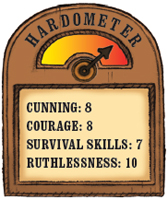

Aurangzeb was the last of the great Mughal emperors in the 17th century, ruling over most of India and Pakistan. He made the Mughal Empire the biggest it had ever been.
YOUNG AURANGZEB
Aurangzeb was born in 1618, the son of Mughal Emperor Shah Jahan and Mumtaz Mahal. (It was Shah Jahan who built the Taj Mahal as a memorial to his dead wife Mumtaz). As a young man, Aurangzeb governed the Deccan (most of central and southern India), and later the Gujarat in northwest India, and led troops into Central Asia. He was ambitious, but his older brother was due to become emperor when Shah Jahan died.
CONQUEROR OF THE WORLD
When Emperor Shah Jahan became very ill in 1657 and it looked as though he might die, Aurangzeb and his older brother went to war. Aurangzeb defeated him, threw his father into prison (he had made a surprise recovery, and died in prison in 1666) and had both his brothers executed. He became emperor in 1658 and was crowned the following year, giving himself the modest title Alamgir, or ‘Conqueror of the World’.
CONQUERING
Aurangzeb had a title to live up to. He fought off Persian and Central Asian invaders to the north of India and expanded the empire there. He also conquered new land in the centre and south of India, making the empire the biggest it had ever been. He had to besiege the city of Golconda for months, but it was worth it. When Golconda surrendered, Aurangzeb got his hands on the world’s only diamond mine.

EVERYONE’S REVOLTING
The Muslim Mughals had been tolerant of the other main religion in India, Hinduism. But Aurangzeb taxed non-Muslims and destroyed Hindu temples. There were rebellions all over the place, especially in the areas he’d recently conquered, and Aurangzeb was constantly fighting to crush them. All the revolts were defeated, but all that fighting was expensive (even for someone with a diamond mine).
END OF AN EMPIRE
Aurangzeb ruled 150 million people. But after his death, aged 88, in 1707 the rebellions were successful, and the Mughal Empire didn’t last long.
